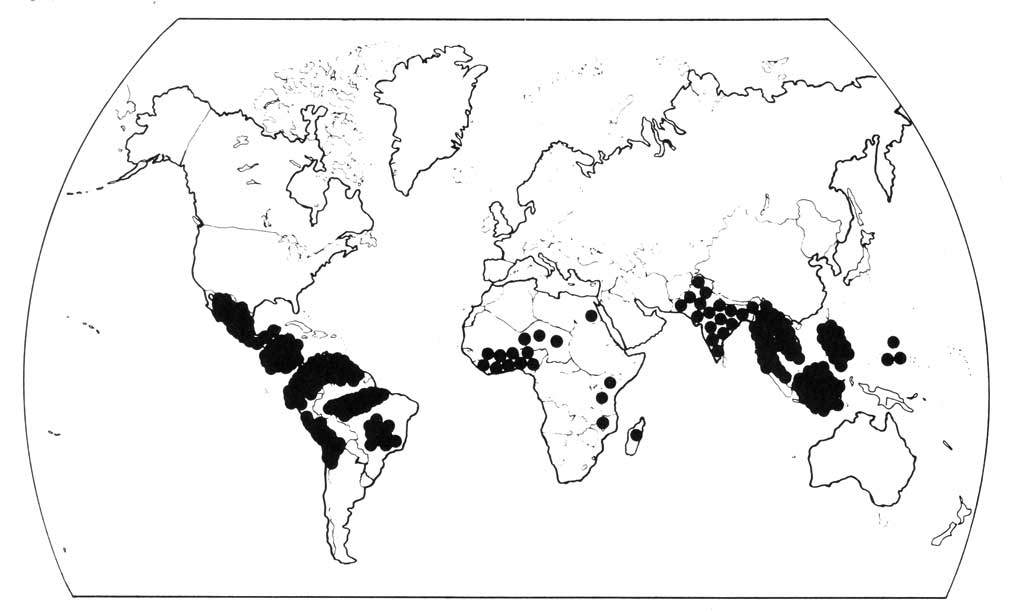1.
Major and
Minor Fruits
|
We have attempted to classify fruits as major (chapter
2 and part of 3) and minor (part of 3 and chapters 4-7), often a difficult
task. Major fruits have often been intro-duced from one region to another
and are frequently well known. They are usually large, but when small, they
are of high quality. They may be marketed inter-nationally, or they may be
economically important only in certain regions. On the other hand, they may
have little or no economic importance; nonetheless, we have considered them
to be major if they are widespread, well known, or often used.
In contrast, minor fruits are usually not widely
distrib-uted. They are often small. They may only grow wild and have little
or no potential for cultivation and mar-keting. Most probably merit neglect,
but some may have the potential to be improved and developed into a major
fruit. Certainly, different cultures interpret edibility in different ways.
But throughout primitive cultures a very wide variety of fruits was sampled.
Thus, knowledge of minor fruits is large on all tropical continents. We have
listed approximately 2,800 minor fruits - 800 for the Americas, 1,200 for
Africa, 500 for Southeast Asia, and 300 for India.
|
We have segregated the major
and minor fruits in separate chapters because we believe most people will
want more information on the major fruits than on the minor fruits. However,
with respect to Rutaceae, the citrusfamily, we have placed major and minor
fruits in one chapter because of the intimate relationships among them and
the difficulty of making a clear separation. Major fruits listed in chapters 2 and 3 are not included in any regional list of minor fruits, even though they may indeed be minor in some of those. On the other hand, minor fruits occurring in more than one region are listed in all appropriate chapters. Of the major fruits listed in chapters 2 and 3, we con-sider the 19 most important to be cashew, pineapple, papaya, sweet orange, lemon, grapefruit, avocado, Brazil nut, breadfruit, banana, guava, mango, coconut, oil palm, date, yellow passion fruit, macadamia nut, litchi, and cacao. Do these fruits have anything in com-mon that might point to winners among less known fruits? Geographical origin seems to be related to greatness (fig. 5). The most important tropical fruits come from South America and Asia. Only the date palm comes |

Figure 5.-Geographical origin of the principal tropical
fruits. Each fruit is represented by a dot.